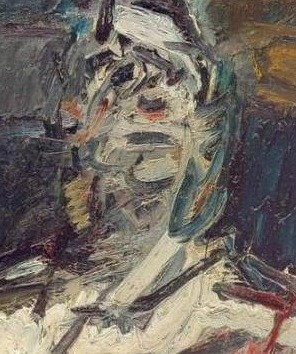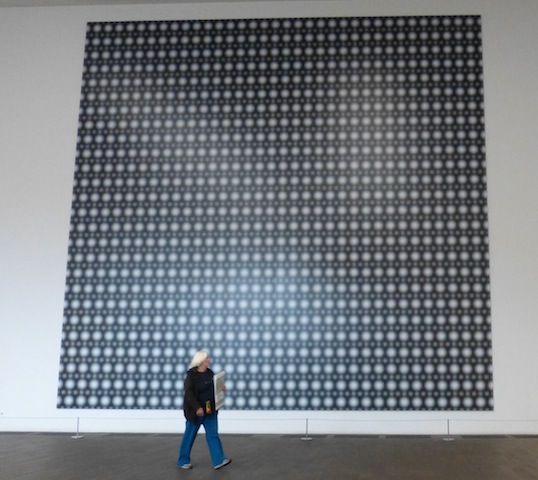In traditional visual art it’s the artist’s attitude and manner of attack (style) that distinguishes one piece from another. For better or worse, the object is self-explanatory.



In conceptual art, the point is not the object–the vision, the insight–but the concept itself: Here is something you haven’t seen before, that only I do. And that, absurdly, seems to be the only requirement. Originality, rather than insight, is the aim. Which is putting the process of art backwards: look first, and experiment; if that process leads you someplace different, then your work is, by definition, original.
I suppose I should disclose at this point that I’m not generally enthusiastic about this stuff.
Sometimes, while pretty silly and definitely lo-cal, concepts seem to fall into the category of amiable jokes. Smile–you’re not expected to agonize.
Sometimes concept pieces are not jokes. This Ai Weiwei is 38 tons of rebar salvaged from earthquake debris and then straightened. A sort of “memento mori.” I’ve only seen this in photos; in the flesh it might be pretty strong.
Sometimes, as below, concepts are merely pretentious. ‘Strontium’ is one image repeated 130 times, as if a ho-hum thought becomes profound if it is bellowed. According to the label, ” ‘Strontium’ continues the artist’s lifelong interest in the aesthetics of astonishment. . .” On some level I have to admit that it succeeds.

Here, cliche combines with rip-off as concept. Marcel Duchamp did “In Advance of a Broken Arm” in 1915. It was a novel and provocative idea then, but 1915 happened a hundred years ago.
![Jeff Koons "Banality Series [es.com]](http://www.stanwashburn.com/wp-content/uploads/2015/08/Koons-Banality-Series-es.com_.jpg)
![Maurizio Cattelan "Untitled" [artsehearts.com]](http://www.stanwashburn.com/wp-content/uploads/2015/08/Maurizio-Cattelan-untitled-2009-artsehearts.com_.jpg)
P.S. After posting this I encountered the following passage, a statement of purpose from 1967, by Ronald Guy Davis, the director of the San Francisco Mime Troupe: “The greatest error of the hippie movement is its amateurism, its innocence, and its ignorance. The result I presume of allowing everyone a creative soul. A good assumption under a strict artistic rule–but a bad one where all rules are discarded and all discipline, art, creation or tension are thrust away. The hippie generation with its acceptance of all with no values, no judgments, is impossible, nay stupid. To attempt to make no judgments is to deface oneself into a mere potato–just as the style of culture called entertainment does. The object is to produce mashed potatoes for mashed potato heads. All soft, thickly packed, soft, gooey and heavy. Where there are no standards or comparisons or judgments we achieve no style, we receive trash called art, superficiality called inspiration.”
from “They Marched Into Sunlight” by David Maraniss (2003)
For an earlier post on this subject, see “Nothing: It’s a Concept” in the archive, April 27, 2013.


![Ai Weiwei _Straight_ [salon.com]](http://www.stanwashburn.com/wp-content/uploads/2015/08/Ai-Weiwei-_Straight_-salon.com_-300x246.jpg)
